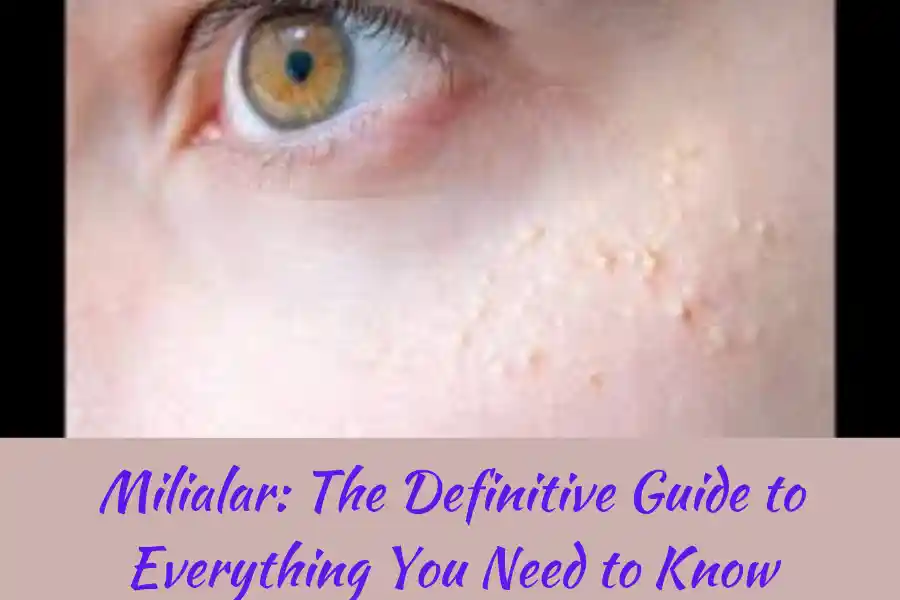Milialar are tiny, harmless bumps, often around the eyes and face. This guide explains what they are, why they happen, and how to deal with them. In today’s changing world, “milialar” means family wealth, strong bonds, and passing down your story. Get ideas and plans to help your family succeed. Learn about managing money and building lasting connections between generations. Join us for intelligent tips and inspiring stories.
Discover Milialar—those tiny, harmless bumps. Learn what they are, why they show up, and how to handle them. Find out how Milialar can shape your family’s success. Get tips on money and family ties for a thriving legacy.
Milialar: An Introduction
Milialar are small, white bumps often found on the face, especially around the eyes. While not harmful, they can be unsightly, prompting some to seek removal for cosmetic reasons. These bumps result from keratin buildup, forming tiny cysts under the skin. There are two main types: primary, common in newborns and adults due to skin development, and secondary, caused by skin damage like sunburn or injury. While they typically fade in weeks or months, some may persist for years. If concerned, consulting a dermatologist for treatment options is advisable.
Key Features of Milialar
Here are the main features of Milialar:
- Small, white bumps, typically 1 to 4 millimeters in size.
- Firm and don’t shift when touched.
- Usually painless with no accompanying symptoms.
- Common in newborns, infants, and adults.
- Results from keratin buildup, a protein in skin, hair, and nails.
- It can vanish in weeks or months but may persist for years.
Diagnosing Milialar: When to See a Doctor

Seeing a doctor is a good idea if you have milia that stay long or are worried about their appearance. They can usually tell if it’s Milia just by looking at it. Sometimes, they might use a special dermatoscope to take a closer look.
Seeing a doctor is essential because milia can sometimes mean another skin problem. Here are some reasons to see a doctor about Milialar:
1. If you have a lot of milia or if they are significant.
2. If the milia hurts or bothers you.
3. If there are other problems like redness, swelling, or itching.
4. If the milia are close to sensitive areas like your eyes.
Causes of Milialar
Milialar forms when keratin, a protein in the skin, gets trapped underneath, creating small cysts. Both adults and neonates frequently experience them. The risk may be increased by a family history of the disorder and some skin issues such as rosacea, acne, or ichthyosis. Additionally, the probability may be increased by drugs like isotretinoin and corticosteroids. Remember that milia cannot be transmitted to others and is not contagious.
Treatment Options for Milialar

If you have Milialar, there are different ways to help.
At Home
1. Warm Compress: Putting something warm on the milia can help them disappear.
2. Exfoliation: This means cleaning your skin well. It can stop more milia from coming.
3. Tea Tree Oil: This can help reduce milia. Mix a bit with your lotion or put it on the milia.
From a Doctor
If the home remedies don’t work, a skin doctor might help. They could:
1. Take the Milia Out: They use a tiny needle to take out what’s inside the Milia.
2. Skin Cleaning: They might remove the top layer of skin, which can eliminate the milia.
3. Special Skin Treatments: Like a gentle scrub, a particular peel, or using a laser.
Remember, all these treatments have some things to think about. Talk to your skin doctor about what might be best for you.
FAQs
What is Milialar, and how does it form?
Milialar, or milia, are small, white bumps on the skin. They form when a protein called keratin gets trapped beneath the skin’s surface, creating tiny cysts.
Are Milialar harmful, and do they go away on their own?
Milialar are generally harmless and not contagious. They can go away naturally over time, often within a few weeks or months. However, in some cases, they may persist for years.
Conclusion
Milialar are small, white bumps that can appear on the skin, often around the eyes or face. While generally harmless, some may seek removal for cosmetic reasons. They result from a buildup of keratin, a protein in skin, hair, and nails, and are common in newborns, infants, and adults. Home remedies like warm compresses, exfoliation, and tea tree oil can be helpful. A dermatologist can provide professional treatments, such as extraction or specialized skin procedures if these don’t work. It’s crucial to weigh the risks and benefits of each treatment with a dermatologist. Regardless of the chosen approach, consulting a healthcare professional is advised for proper care.
If you want to learn more, visit our website, informationalnews.com.

Hi, I’m Ryan! I’ve been blogging, writing, and doing SEO and marketing for over 5 years. I love creating interesting content and making sure people can find it easily on the internet. I’m also really good at coming up with cool marketing ideas to get people excited about stuff. When I’m not working, I enjoy playing with new tech stuff and exploring the outdoors for new ideas. Let’s make awesome things happen together!




One thought on “Milialar: The Definitive Guide to Everything You Need to Know”